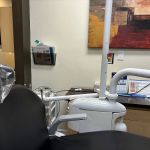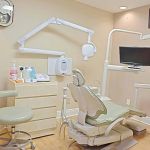- 1-Understanding-Gum-Inflammation-After-Dental-Cleaning
- 2-Common-Causes-of-Gum-Inflammation-Post-Cleaning
- 3-Immediate-Care-Tips-for-Inflamed-Gums
- 4-Home-Remedies-to-Soothe-Gum-Inflammation
- 5-When-to-See-a-Dentist-for-Gum-Inflammation
- 6-Preventive-Measures-to-Avoid-Future-Gum-Inflammation
- 7-Case-Study-Effective-Gum-Inflammation-Treatment
1. Understanding Gum Inflammation After Dental Cleaning
Gum inflammation after dental cleaning is a common but often alarming experience for many patients. While dental cleanings are essential for maintaining oral health, they can sometimes cause temporary irritation and swelling in the gums. This inflammation usually results from the removal of plaque and tartar that had irritated the gum tissue over time.
Understanding this process helps patients anticipate mild discomfort and respond appropriately. Post-cleaning inflammation is generally a sign that the gums are healing and adjusting to a cleaner environment, but it requires proper care to avoid complications.
2. Common Causes of Gum Inflammation Post-Cleaning
Several factors contribute to gum inflammation following a dental cleaning. The cleaning procedure often involves scraping away hardened tartar and plaque beneath the gum line, which can cause temporary trauma to the delicate gum tissue.
Additionally, if bacteria remain in pockets or if the patient had pre-existing gingivitis or periodontal disease, inflammation may be more pronounced. Sensitivity to dental tools or minor abrasions during cleaning also play a role in the inflammatory response.
Recognizing these causes enables targeted treatment and reassurance for patients experiencing post-cleaning gum soreness.
3. Immediate Care Tips for Inflamed Gums
Right after dental cleaning, patients can take simple yet effective steps to reduce gum inflammation. Rinsing gently with warm saltwater several times a day helps soothe irritated tissue and reduce bacterial buildup. Avoiding hard, spicy, or acidic foods prevents further irritation.
Maintaining good oral hygiene by brushing gently with a soft-bristled toothbrush and flossing carefully supports healing without aggravating the gums. Over-the-counter anti-inflammatory gels or mouthwashes recommended by your dentist can also alleviate discomfort.
Following these immediate care tips fosters quicker recovery and minimizes discomfort.
4. Home Remedies to Soothe Gum Inflammation
In addition to professional advice, several home remedies can complement treatment for gum inflammation after dental cleaning. Applying cold compresses externally reduces swelling and numbs pain. Aloe vera gel, known for its anti-inflammatory properties, can be applied carefully to gums.
Hydrogen peroxide diluted with water acts as a mild antiseptic rinse to keep the area clean. Herbal teas such as chamomile or green tea may help soothe gum tissues when cooled and used as rinses.
Patients should always consult with their dental care provider before trying new remedies to ensure safety and compatibility.
5. When to See a Dentist for Gum Inflammation
While mild gum inflammation after dental cleaning is normal, certain signs indicate the need for professional evaluation. Persistent or worsening pain, excessive swelling, bleeding that doesn’t stop, or signs of infection such as pus or fever warrant immediate dental attention.
Ignoring severe symptoms can lead to complications including gum disease progression or abscess formation. Regular dental follow-ups and open communication with your dentist help monitor healing and address any concerns promptly.
6. Preventive Measures to Avoid Future Gum Inflammation
Preventing gum inflammation starts with consistent oral care and professional maintenance. Brushing twice daily, flossing, and using antiseptic mouthwash reduce plaque buildup. Scheduling regular dental cleanings every six months keeps tartar accumulation in check, minimizing irritation.
Adopting a balanced diet rich in vitamins C and D supports gum health, while avoiding tobacco products prevents inflammation and disease. Educating patients about the importance of these habits is key to long-term oral wellness.
7. Case Study: Effective Gum Inflammation Treatment
Jessica, a 32-year-old patient, experienced noticeable gum swelling after a routine dental cleaning. Following her dentist’s guidance, she incorporated warm saltwater rinses, gentle brushing, and avoided irritants. Within a week, her inflammation subsided significantly.
Her proactive care combined with professional advice from Dentistry Toothtruth ensured a smooth recovery, demonstrating how proper treatment effectively manages post-cleaning gum inflammation.
For personalized oral health products and expert support, visit Dentistry Toothtruth to find tailored solutions that enhance your gum care regimen.







 Affordable Dental at Eastern & Windmill4.0 (287 review)
Affordable Dental at Eastern & Windmill4.0 (287 review) Dr. Hecklin: Family & Cosmetic Dentistry5.0 (316 review)
Dr. Hecklin: Family & Cosmetic Dentistry5.0 (316 review) Dr. Alison Seliger-Schamberg, DMD0.0 (0 review)
Dr. Alison Seliger-Schamberg, DMD0.0 (0 review) Coastal Dental Group4.0 (183 review)
Coastal Dental Group4.0 (183 review) Ridgewood Valley Pediatric Dentistry4.0 (97 review)
Ridgewood Valley Pediatric Dentistry4.0 (97 review) Lone Mountain Dental Las Vegas4.0 (538 review)
Lone Mountain Dental Las Vegas4.0 (538 review) The Importance of Oral Health Education During Pregnancy for a Healthy Pregnancy
The Importance of Oral Health Education During Pregnancy for a Healthy Pregnancy Best Tips for Brushing Your Teeth Properly for Healthy Gums: Essential Techniques for Oral Health
Best Tips for Brushing Your Teeth Properly for Healthy Gums: Essential Techniques for Oral Health Why Skipping Dental Checkups Can Lead to Bigger Oral Health Problems
Why Skipping Dental Checkups Can Lead to Bigger Oral Health Problems Advantages of Porcelain Dental Restorations
Advantages of Porcelain Dental Restorations How Can Diabetes Cause Tooth and Gum Problems? Preventing and Managing Oral Health Issues
How Can Diabetes Cause Tooth and Gum Problems? Preventing and Managing Oral Health Issues Healthy Habits for Promoting Good Oral Health and Hygiene: Tips for a Healthy Smile
Healthy Habits for Promoting Good Oral Health and Hygiene: Tips for a Healthy Smile